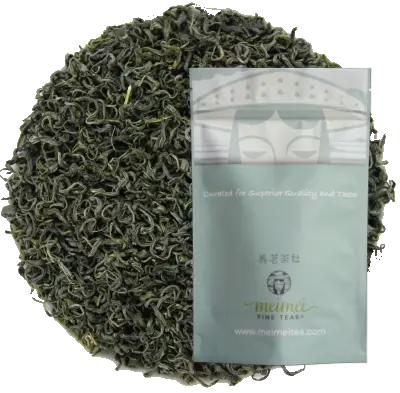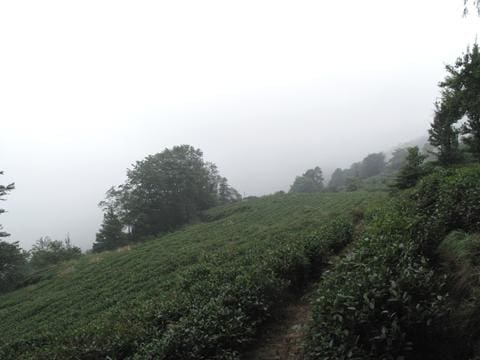
A Steamed Chinese Green Tea? Meet Enshi Yu Lu Green Tea
One of the supposed differences between Chinese green tea and Japanese green tea is the step taken that halts the tea leaves from degrading, a step known as shaqing or “killing the green.” Colloquially known in English as kill-green, the purpose of this step is to shut down the enzymatic activity of the tea leaves, effectively preventing them from turning brown.

There are a number of ways to implement a kill-green step, but the two most popular and traditional ways of processing a green tea are steaming and pan firing. As a result, people commonly believe that Chinese green teas use the pan firing method while Japanese green teas use the steaming method, and this difference in method is what accounts for the difference in flavor.
This is partly true and partly false.
There’s a lot that contributes to the flavor of your tea, from variables you can control (such as time, water, and temperature) to variables you cannot (such as processing method, weather, and soil composition). Unless you’re processing your own tea, the kill-green step is one of those variables you can’t control, and even though it isn’t the whole story, it does play a role in how the tea ultimately tastes.
In general, a tea that has been processed by pan firing has a much more complex flavor due to the length of time it takes to achieve kill-green. By placing the tea leaves in a wok and slowly heating them to temperatures above 150°F (65°C), the vegetal and grassy notes tend to get subdued in favor of toastier notes. This is one of the steps responsible for bringing out that chestnut and nutty flavor associated with good dragonwell.
By contrast, the steaming method heats the tea leaves much more quickly, usually in less than 60 seconds! While there are some techniques that involve steaming tea leaves more than two minutes, the normal steaming range is right around 30 seconds. It is the length of time that the leaves are steamed that determines so many properties of the tea—particularly the flavor, color, and aroma—and tea masters must use impeccable timing to get it just right. Depending on how long the tea is steamed, you can have a clear and crisp tea or a rich and brothy tea.
So are all Chinese green teas pan fried? Not exactly.
Meet Enshi Yu Lu!
Hailing from the Enshi prefecture in southwestern Hubei Province in China, a tea known as Yu Lu or “Jade Dew” has made quite a name for its province, in large part due to the distinctive way in which the tea is crafted. This is one of the only Chinese green teas that uses the steaming method to kill-green!

Enshi prefecture features a subtropical climate characterized by high humidity and moderate temperatures year-round, creating the perfect conditions for plenty of fog and rain. Though this might sound unappealing to some of us, this type of weather is excellent for tea growth!
Enshi had been producing tea since the 7th century AD, during the Tang Dynasty. With evidence gathered from various historical sources, such as Ch’a Ching or The Classic of Tea, written by the sage Lu Yu, scholars believe that the steaming method was one of the earliest ways of processing green tea. Naturally, as trade routes started to form, this method would eventually work its way over to Japan where it was used to craft teas grown there. However, over time, the practice of steaming died out in mainland China as farmers and artisans started transitioning over to the pan firing technique.
Yu Lu is believed to have originated during the reign of Emperor Kangxi in the 17th century, but during this time, it was crafted by the pan firing method. Thanks to some experimenting at the turn of the 20th century, the crafting of Enshi Yu Lu was reverted back to the steaming method, leaving it as one of the only Chinese teas to be produced this way.
The results were better than anyone expected.
When it was introduced to Japan in 1945, it was enthusiastically received and nicknamed “Chinese gyokuro,” which is high praise indeed!
However, the nickname might be a little misleading.
Although Enshi Yu Lu is crafted with the steaming method, it is quite distinct from any Japanese green teas. The reason for this partially has to do with those other variables you can’t control, namely terroir. The unique climate and soil composition of Enshi gifts us with a tea that most properly belongs in its own category—rich and full-bodied with a mineral character and hint of florality.
While not as vegetal as a Japanese green tea, neither is Yu Lu much like Dragonwell or Anji Bai Cha. It is a one-of-a-kind tea that must be experienced on its own terms. For good reason, it is one of China’s ten famous green teas.